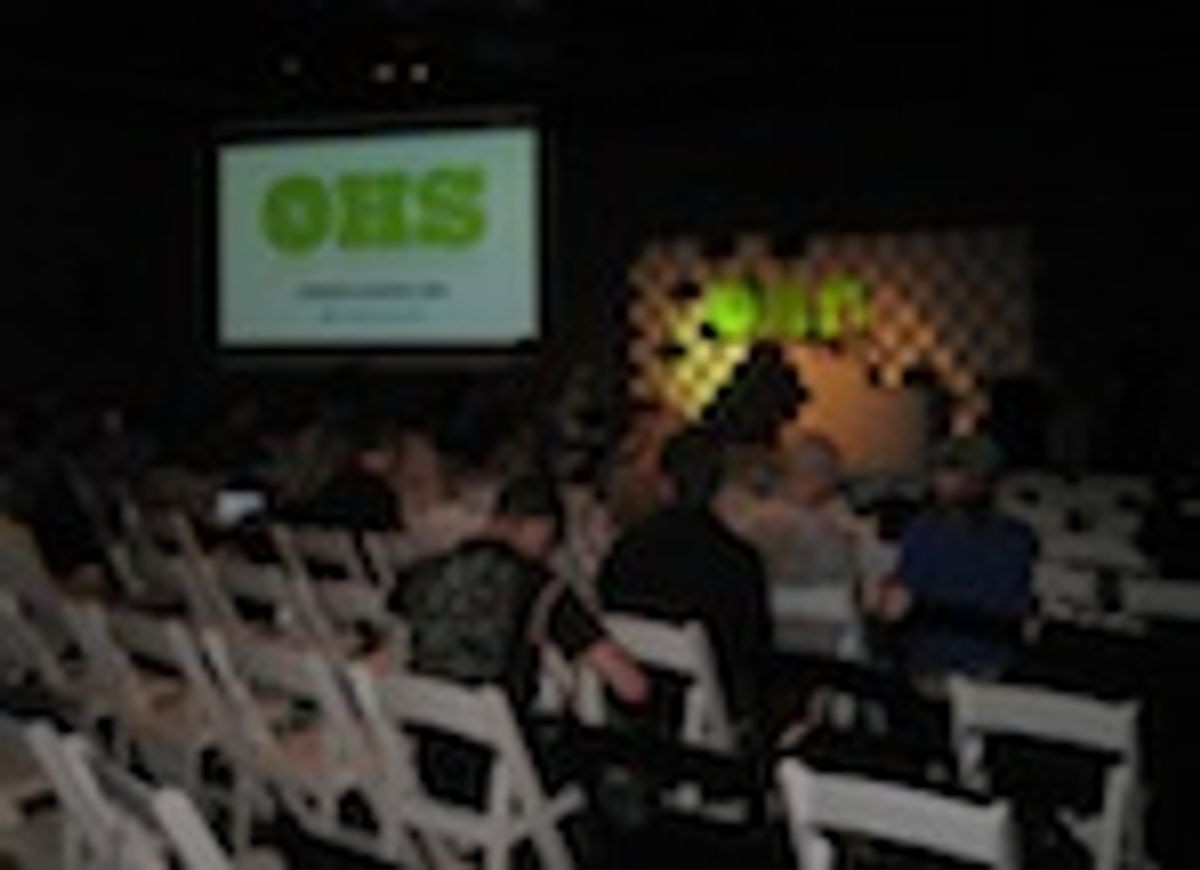This past Thursday, I attended the third annual Open Hardware Summit, organized by the Open Source Hardware Association and held at the Eyebeam Art + Technology Center in Manhattan. While open software is now very much mainstream, open hardware is in a far more primitive state. So hearing from the folks at ground zero of this newfangled way of developing and marketing products was illuminating.
Before recounting some of the highlights of this conference, I should take a moment to try to outline what open-source hardware is. The basic concept is simple enough: It’s hardware for which the design documents—schematic diagrams, board layouts, CAD files, whatever—are all made available to anyone under some sort of open license. As with open software, different types of licenses grant varying degrees of freedom (although a lot of freedom appears to be the norm here). This approach stands in stark contrast to the usual way of doing business, where a company encircles its intellectual property wagons and keeps competitors at bay with a variety of weapons: copyrights, patents, or simply by maintaining trade secrets.
To anyone over about 21, it’s difficult to get your head around how a business can possibly make a buck when it gives most of its intellectual property away for bupkis. But some really do. Sparkfun is probably the poster child for this movement, having grown over the past decade from a dorm-room operation to a multi-million dollar business.
The solution to the paradox seems to be in the implicit assumption—that giving something away for free provides nothing in exchange. In fact, such generosity can bring a company quite a lot. For one, it fosters customer loyalty. And these loyal customers don’t just offer repeat sales. Many offer advice about the new products or product modifications they want. Some of the more talented offer their services to improve existing products and designing new ones, providing a break-neck pace of innovation. And more than a few offer to help other customers out. So a company gets quite a bit for “free,” reducing the usual expenditures it would have to make in product development and customer support.
Keynote speaker Chris Anderson kicked off talks with remarks about open-source hardware in general and his open-source hardware brainchild DIY Drones in particular. Anderson, for those not familiar with his energetic schedule, is a prolific author and the editor-in-chief of Wired magazine; he also founded and helps run DIY Drones, a virtual get-together for tinkerers who build their own unmanned aerial vehicles for fun. Well, it's that plus a healthy online business that sells open-source autopilots and other kinds of hardware to support this high-tech pastime.
Anderson spoke about some of the things he and his colleagues at DIY Drones have had to grapple with—just how open to be with everything, how to reward those people in their community who make the greatest contributions back to the company, and how to respond to “cloners” who take the designs developed at DIY Drones and sell identical hardware at cut rates.
Such copying is, of course, allowed--although cloners, Anderson explained, often go over the line by expropriating copyrighted marketing materials as well. This might seem the Achilles heel to any open-hardware-based business. But, Anderson argued, cloners can’t duplicate an open-hardware business’s chief asset: the community it builds around it. He also told a charming story of how he brought one Chinese cloner into the DIY Drones fold, where the would-be competitor began to contribute—first translations, then bug fixes, eventually becoming a DIY Drones lead developer.
Another highlight of the day was a talk by “Akiba” of Freaklabs (Cher- and Madonna-like, he goes by just one name), who recounted how he and a few buddies from the Tokyo Hackerspace made good use of open-source hardware in the aftermath of the Fukishima reactor disaster. At a time when Japanese government officials were assuring people outside the evacuation zones that radiation levels were safe, Akiba and friends were cobbling together radiation monitors to double check those assurances. In some areas, they found the government’s rosy picture to be grossly misleading. Borrowing from various open-source designs, they quickly assembled a half-dozen or so geo-tagging, data-logging radiation monitors, which they strapped onto their cars and began crisscrossing the nation, ultimately uploading millions of readings to the Safecast database.
While the summit included many other speakers and many other entertaining stories of their open-hardware exploits, I’ll leave this report with the As—Anderson and Akiba. Their presentations bracketed the spectrum of applications for open-sourcing hardware—from building a for-profit business to altruistically trying to help out some fellow human beings in peril. The day’s especially refreshing take-away, though, was that, with open sourcing, the line between such very different pursuits can be a lot fuzzier than we’re used to.
David Schneider is a senior editor at IEEE Spectrum. His beat focuses on computing, and he contributes frequently to Spectrum's Hands On column. He holds a bachelor's degree in geology from Yale, a master's in engineering from UC Berkeley, and a doctorate in geology from Columbia.




